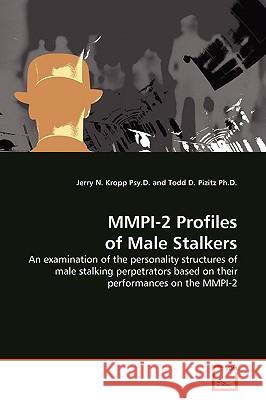MMPI-2 Profiles of Male Stalkers » książka
MMPI-2 Profiles of Male Stalkers
ISBN-13: 9783639177985 / Angielski / Miękka / 2009 / 112 str.
Stalking is a potentially lethal crime that has significantly affected millions. The present study attempted to explore the dynamics of stalking by evaluating the personality structures of male stalking perpetrators utilizing the MMPI-2. The MMPI-2 profiles of male stalkers were compared to a control group of males from the normal population matched on age, ethnicity, and educational background. The differences of the clinical and validity scales T score means on the MMPI-2 were analyzed using one-way ANOVAs. Based on the statistical analysis, the male stalkers' obtained higher scores on Scales Pd, Pa, and F and the differences in means were statistically significant. The stalking group's scores on Scales Hs, D, Hy, Pt, and Sc where also significant at the p
Stalking is a potentially lethal crime that hassignificantly affected millions. The present studyattempted to explore the dynamics of stalking byevaluating the personality structures of malestalking perpetrators utilizing the MMPI-2. TheMMPI-2 profiles of male stalkers were compared to acontrol group of males from the normal populationmatched on age, ethnicity, and educationalbackground. The differences of the clinical andvalidity scales T score means on the MMPI-2 wereanalyzed using one-way ANOVAs. Based on thestatistical analysis, the male stalkers obtainedhigher scores on Scales Pd, Pa, and F and thedifferences in means were statistically significant.The stalking groups scores on Scales Hs, D, Hy, Pt,and Sc where also significant at the p<.05 level,while the T scores of the non-stalking group obtainedsignificance on Scale K at the p<.05 level. Theresults indicated that male stalkers may experiencemore interpersonal distress and, in timesof stress, become more irritated, aggressive andmanipulative than the matched sample.











